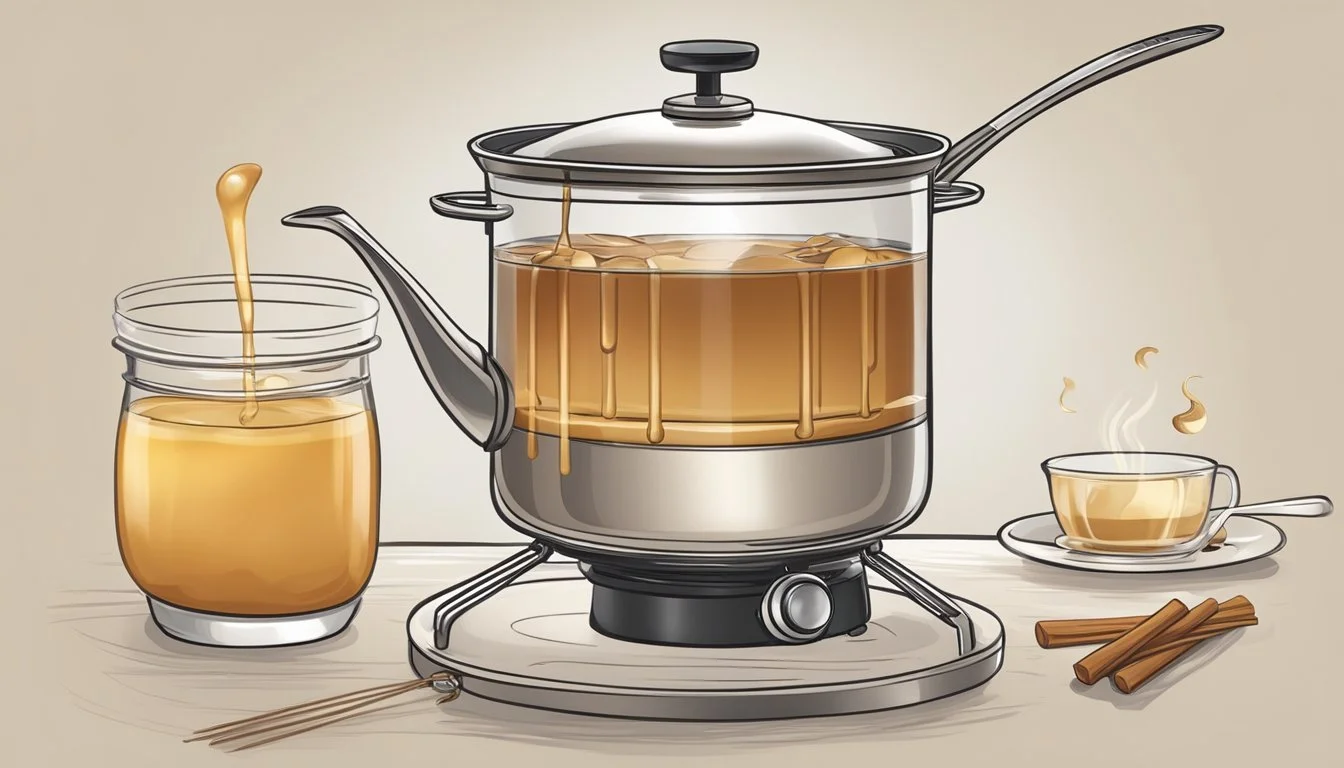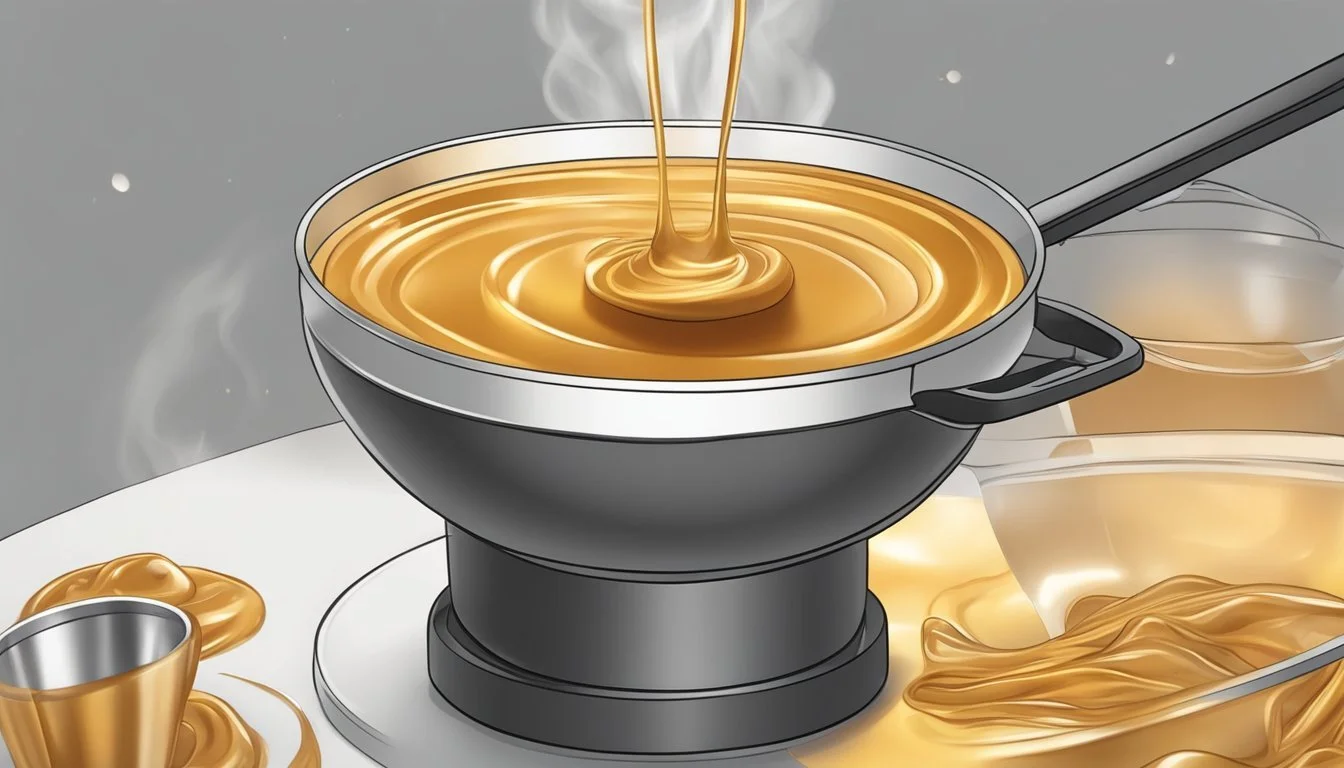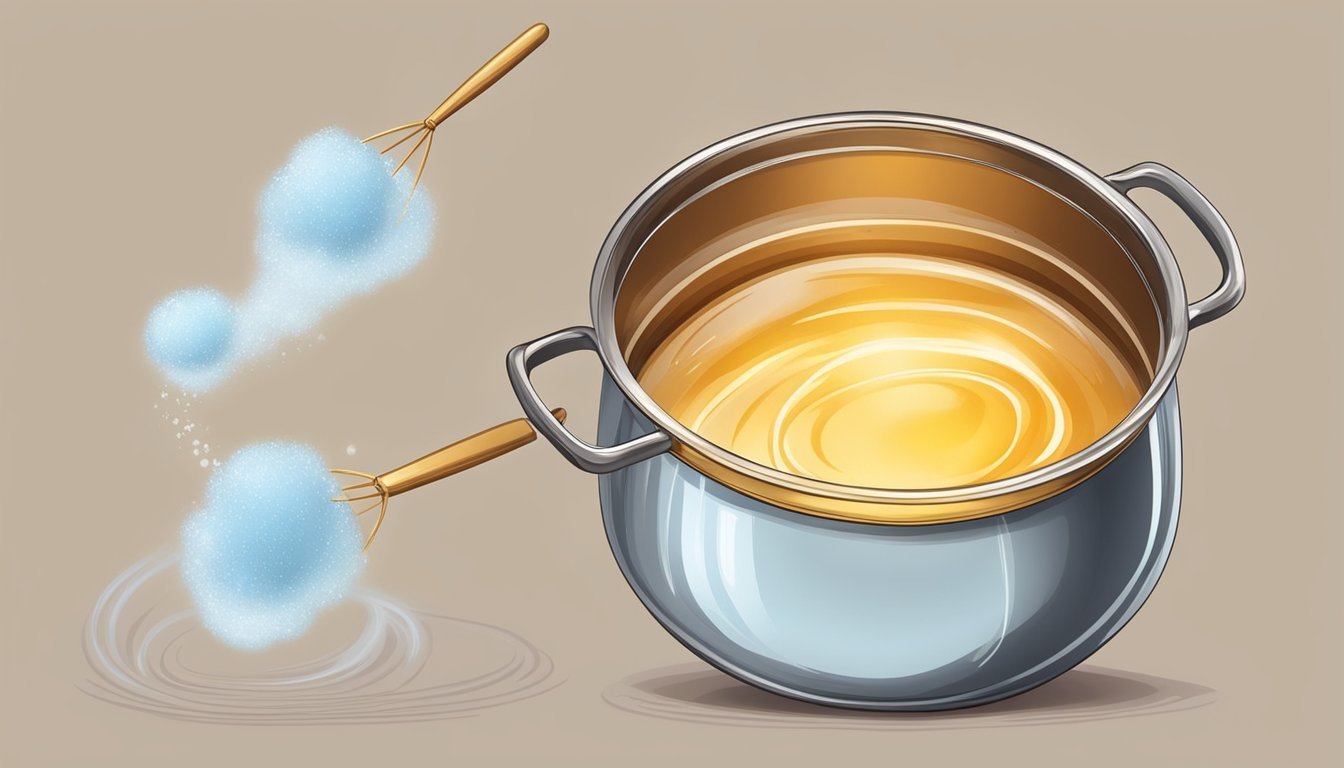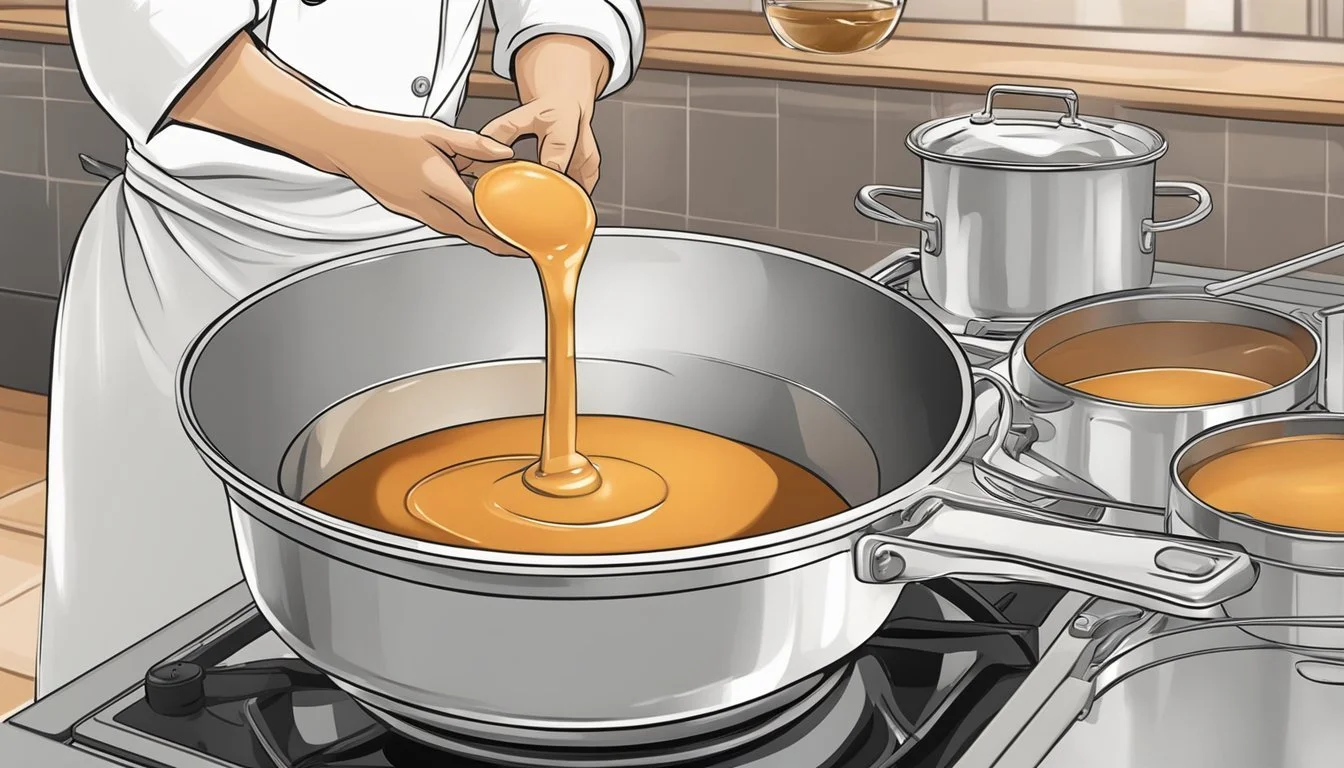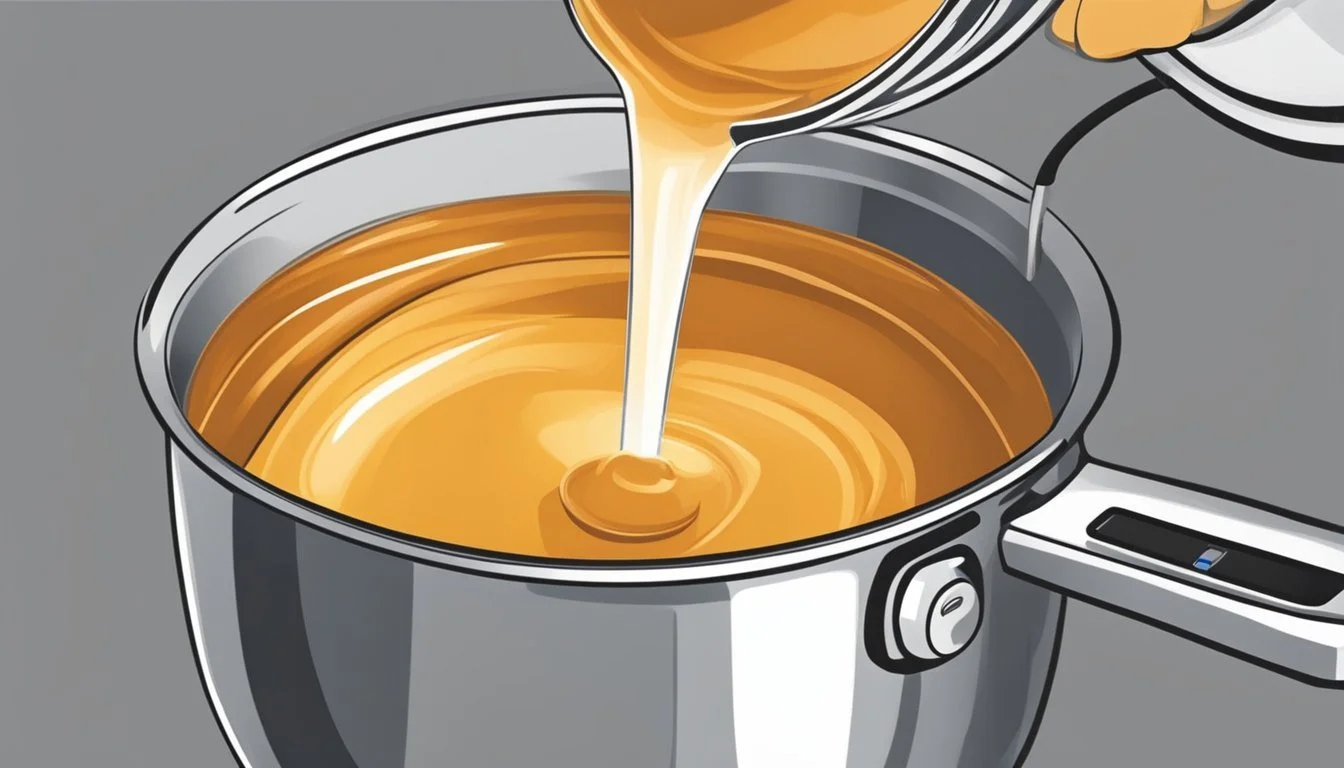Saving Burnt Caramel
Tips to Prevent Bitterness and Salvage Your Dessert
Caramel, with its rich and creamy texture, is an essential component in a myriad of desserts. The process of caramelizing sugar is delicate, as it involves carefully heating sugar until it melts and reaches a deep amber color. Achieving the perfect balance of sweet and slightly bitter notes is crucial for the flavor profile of caramel. It serves as both a featured ingredient and a garnish, making its presence in desserts not only crucial for taste but also for aesthetic appeal.
When making caramel, even the most experienced chefs sometimes encounter the mishap of burning the sugar. Burnt caramel has a distinct, strong bitter taste that can overpower the intended flavor of a dessert. However, not all hope is lost when caramel passes beyond the desired stage of golden amber. There are methods to salvage caramel that has slightly burnt, ensuring that the effort and ingredients do not go to waste.
Understanding the properties of sugar and the stages of caramelization is imperative for rescuing burnt caramel. A moderate heat and constant attention are key to preventing further burning and possibly restoring the caramel's velvety consistency. In some cases, introducing additional sugar can help counteract the bitterness, while being mindful not to scrape the burnt bits into the mixture. This approach not only saves the caramel but also preserves the quality of desserts it accompanies.
Understanding Caramel
Caramel is a confectionary delight that hinges on precision in temperature and timing to achieve its signature flavor and color. Mastery of its creation is essential for both professional chefs and home cooks alike.
The Science of Caramelization
Caramelization is a complex chemical reaction where sugar molecules (sucrose) break down under the influence of heat. This process begins around 320°F (160°C) and results in the development of hundreds of new compounds. These compounds are responsible for caramel's characteristic rich, deep flavor and amber color. Unlike the Maillard reaction, which involves amino acids and sugars and typically occurs in protein-rich foods, caramelization is purely a sugar reaction.
Key components in caramelization:
Heat: Essential for initiating the reaction.
Sugar: The primary substance that undergoes transformation.
Time: Influences the extent of caramelization and can lead to burning if not controlled.
Stages of Sugar Cooking
Cooking sugar to create caramel involves several distinct stages, each defined by its temperature range and resulting characteristics. Monitoring temperature with a candy thermometer is critical to identify these stages:
Thread Stage (230-235°F / 110-112°C): Sugar becomes syrupy and forms thin threads when dropped into cold water.
Soft Ball Stage (235-240°F / 112-116°C): Sugar can form a soft ball in cold water but flattens once removed.
Firm Ball Stage (245-250°F / 118-121°C): Sugar forms a firm ball that doesn't flatten until pressed.
Hard Ball Stage (250-265°F / 121-129°C): Sugar forms a hard ball that holds its shape but is pliable.
Soft Crack Stage (270-290°F / 132-143°C): Sugar forms threads that are flexible and not brittle.
Hard Crack Stage (300-310°F / 149-154°C): The sugar will form hard, brittle threads that snap easily.
Caramel Stage (320+°F / 160°C): The stage where sugar becomes caramel, melting and acquiring its characteristic color and flavor.
Important considerations to avoid burnt sugar:
Avoid overheating: Sugar burns above 350°F (177°C), creating a bitter flavor.
Continuous monitoring: Keeps track of changing temperatures to prevent burning.
Consistent stirring: Distributes heat evenly, reducing the risk of hotspots.
Key Ingredients and Tools
In the delicate process of making caramel, the right ingredients and tools are crucial for achieving the perfect balance of flavor and texture. Paying attention to these essentials can mean the difference between a scrumptious concoction and a bitter disappointment.
Essential Ingredients
To create a rich caramel, one must begin with the fundamental building blocks:
Water: Aids in the even melting of sugar.
Granulated Sugar: The foundation of caramel, providing sweetness and color.
Heavy Cream: Adds a creamy texture and helps to mellow out the flavors.
Unsalted Butter: Contributes to the caramel's richness and depth.
Vanilla Extract: Enhances overall flavor with a hint of vanilla essence.
Salt: Balances the sweetness and brings out the complexity of the caramel.
Corn Syrup (Optional): Can help prevent crystallization for a smoother texture.
Important Tools
Precision and safety are paramount when crafting caramel. The following tools facilitate these elements:
Candy Thermometer: Essential for monitoring the temperature of the caramel to prevent burning.
Heat-Proof Stirring Utensils: Such as a whisk or spatula, for consistent stirring.
Heavy-Bottomed Saucepan: Promotes even heat distribution, reducing the likelihood of burning.
Pastry Brush: Used with water to brush down sugar crystals from the sides of the pan.
Oven Mitts: Protection from high temperatures when handling hot cookware.
Parchment Paper: Ideal for lining trays and ensuring caramel doesn’t stick to surfaces.
By meticulously selecting ingredients and utilizing the proper tools, one can confidently approach the art of making caramel.
The Process of Making Caramel
In the art of caramel-making, achieving the perfect balance of color and flavor hinges on precise techniques and temperature control. The transformation of sugar into luscious caramel is both a science and an art.
Mixing and Melting Techniques
One begins the caramelization process by mixing sugar with water in a saucepan. It's crucial to dissolve the sugar completely before increasing the heat. As the mixture heats, the sugar should melt evenly, turning from a clear syrup to a deep golden hue. Stirring is essential during this phase as it prevents the sugar from clumping and promotes even melting. The mixture should reach a creamy texture without any sugar crystals.
Controlling Temperature
Boiling sugar must be monitored closely using a candy thermometer. The ideal temperature for caramelization falls between 320°F (160°C) and 350°F (177°C), known as the medium heat range. At this stage, the sugar develops a rich amber color and a full-bodied flavor. Surpassing this temperature range can lead to burnt caramel, which has an acrid taste and a grainy texture. Should the temperature rise too quickly, removing the pan from the heat intermittently can help regain control.
Troubleshooting Common Issues
When making caramel, issues such as crystallization and burning can lead to a less than perfect sauce. Understanding how to prevent and fix these problems is key to achieving a smooth and palatable caramel.
Preventing Crystallization
Crystallization can cause a gritty texture in a caramel sauce. It occurs when sugar molecules attach to each other, forming crystals. To prevent this:
Always use a clean pot with smooth sides.
Avoid stirring the sugar and water mixture once it begins to boil; agitation can encourage crystal formation.
Incorporating an acid, like lemon juice, helps break down sucrose into glucose and fructose, which can resist crystallization.
Identifying and Rescuing Burnt Caramel
Burnt caramel has a distinctly bitter taste that can overpower the intended flavors. If the sugar cooks too long, it can develop a burnt, bitter taste. To rescue burnt caramel:
Stop the cooking process: Immediately remove the pot from the heat.
Dilute the bitterness: Carefully add a small amount of water—this helps to dilute the burnt flavors.
Strain: To remove any burnt bits, pour the caramel through a fine sieve.
By carefully following these guidelines, one can learn how to avoid common pitfalls that lead to a flawed caramel and how to perform a save if things go awry.
Enhancing Caramel Flavors
Achieving the perfect caramel flavor requires a delicate balance of sweetness and complexity. The following subsections explore proven methods to fine-tune and enhance the characteristic taste of caramel, whether it be in sauces, candies, or other desserts.
Balancing Sweetness with Salt
Salt is a powerful component that can transform the one-dimensional sweetness of caramel into a nuanced flavor profile. When making caramel sauce or candy, a pinch of salt can offset excessive sweetness and bring out the caramel's rich, buttery notes. Here's how to achieve this balance:
Start with a small amount of salt, adding it to the caramel as it cooks.
Taste and adjust, remembering that a little goes a long way.
Salt not only enhances flavor but also can intensify the perception of other ingredients like vanilla and chocolate, elevating the overall taste of desserts.
Infusing Additional Aromas
Incorporating vanilla or other additives into caramel introduces new layers of aroma and flavor. Vanilla is particularly effective because its warm, complex notes can deepen the flavors inherent in caramel. Here are some tips for aromatic infusion:
Stir in vanilla extract after removing caramel from heat to preserve its flavor.
Experiment with other aromatics like spices or citrus peels for unique twists.
Different aromatics can complement the base flavors of caramel in sauces or candies, creating a more sophisticated, multi-dimensional taste experience.
Different Uses for Caramel
Caramel is a versatile confection that can enhance a variety of desserts with its rich, sweet flavor. It can be meticulously engineered into sauces or candies, each with their own texture and application in dessert-making.
Caramel Sauce and Applications
Caramel sauce is a fluid, golden concoction often drizzled over ice cream, cakes, and other desserts to add a layer of luxuriant sweetness. Homemade caramel sauce usually combines sugar, cream, and butter, heated until reaching the desired consistency and color. It is imperative to maintain a moderate heat to avoid burning, as the success of a caramel sauce lies in its smooth texture and balanced sweetness. The sauce's versatility extends to lattes, cheesecakes, and even savory dishes for a complex flavor profile.
Uses for Caramel Sauce:
Ice Cream Topping
Coffee and Latte Flavoring
Cheesecake Drizzle
Apple Dip
Making Caramel Candies
Caramel candy, or caramel chews, present an indulgent treat that packs a punch of rich flavor in a small package. A more solidified version of caramel, these candies require a precise recipe and careful attention to temperature. They can be enjoyed on their own or used to elevate dessert bars and cookies. The texture of a caramel candy should be uniformly chewy, never hard or brittle.
Applications in Desserts:
Filling for Chocolates
Component in Dessert Bars
Turtles and other Chocolate-Caramel-Nut Confections

